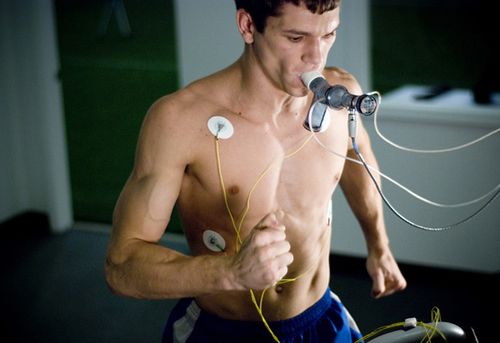Core training is what fitness is all about these days. Ten years ago, “core training” was basically crunch variations along with an assortment of leg raises. Then Dr. Stuart McGill came along and changed the game. Thanks to his terrific research, Dr. McGill taught us that the ability to brace the core, and maintain that position for time, improves back health and performance. When I say “brace,” I’m referring to that core tension you instinctively create when someone is about to punch you in the stomach. You don’t need to bend your spine around like a twig to get the most bang for your core training buck.
McGill’s research also shows how detrimental spinal flexion can be. Each time you do a normal crunch, your spine flexes. It’s the repeated flexion of the spine that can lead to all sorts of nasty problems such as disc herniation. And when you bend over to pick up a weight while your spine is rounded the story gets even worse. In order to protect your discs and nerves from undue stress it’s essential to learn how to properly brace your core.
Now, teaching someone to brace their core isn’t as easy as it sounds. Sure, we can all tense our abs, but most of us can’t maintain that tension while moving our body, especially when an external load is added to the mix. A simple way to train someone to maintain core tension is with the plank. Most people should be able to hold the regular plank for 90 seconds. This core endurance is essential to keeping your back healthy and strong.
However, we’ve been inundated with pics, articles, and videos about the plank, so doing that exercise probably doesn’t sound new or exciting to you. That’s why I want to show you two of my favorite core exercises once people are ready to move past the regular plank.
The first exercise is called “Stir the pot,” and I learned it from Dr. McGill. It’s an outstanding exercise to build core stability strength. Here’s how you do it.
First, rest your elbows on a large swiss ball with your body in the plank position – body straight from neck to ankles and core braced tight. Second, make circles with your forearms/elbows so the ball rolls around without moving your body. This exercise is tougher than it looks when you do it right. You’ll feel muscles working all the way down to your spine. As you get accustomed to the exercise focus on making larger circles. The goal of this exercise, or any core exercise, is to make it as difficult as possible.
The second exercise, the “leg curl with single leg balance,” I learned from Dr. Craig Liebenson, owner of LA Sports and Spine and a terrific doctor who specializes in everything related to the spine.
To perform this exercise, lie on your back with your legs straight and heels resting on a Swiss ball. Then, lift your hips as high as possible and perform one leg curl. Next, brace your core/hips super tight and lift the right leg in the air and hold it for 4-5 seconds. Do the same with the left leg. From start to finish it’s one rep. Perform 5 reps.
Not only does this exercise improve core stability strength and performance, but it also induces a surprising side-effect that I hadn’t measured before: it loosens your hamstrings.
Try it with yourself or a client who has tight hamstrings. First, perform a standing toe touch and make a note of how far your fingertips reach. Then, perform five reps of the leg curl w/single leg balance and test it again. It’s common to increase your range of motion 3-4 inches. Pretty impressive considering you didn’t do any stretching.
How does the leg curl exercise increase hamstring mobility? Before I answer that, let me explain why your muscles get stiff in the first place.
You see, when a muscle is stiff most trainers will stretch it. Immediately, the muscle will increase its range of motion. But here’s the important part that I’m sure you’ve experienced: the added range of motion from static stretching doesn’t hold. A few hours later, or the next day, the muscle is stiff again.
More advanced trainers will do deep tissue work such as the Active Release Technique (ART) to restore range of motion. This hands-on style of improving mobility and tissue health can be effective and I’ve used similar techniques for years. But again, the added range of motion doesn’t hold for long.
The problem with typical stretching or soft tissue techniques is that they don’t address the root of the problem. I’d say that 99% of the time the problem is actually in the spine. In order for a muscle to be flexible, the nervous system must get the memo that it’s safe to increase the range of motion. In other words, if you have super stiff hamstrings it’s likely the deep muscles that support and surround your spine aren’t firing correctly, or they’re just plain weak. So the nervous system puts the brakes on your hamstrings mobility.
The leg curl with single leg balance activates deep core and hip muscles that provide a strong foundation of support for your muscles to work against. This immediate neural enhancement (potentiation) allows the nervous system to release the brake that’s currently holding your hamstrings tighter than guitar strings.
And when you perform the “stir the pot” exercise right before the leg curl exercise it works even better. So, test your hamstring mobility by attempting to touch your toes, then perform one set of each exercise I posted above. Retest your hamstring mobility and prepare to be impressed. Continue doing these two exercises for one week and the increased range of motion will hold.
Get ready for a more effective approach to mobility training. It all starts at the spine.
Stay focused,
CW
Click the banner below to find out how to get ripped…


